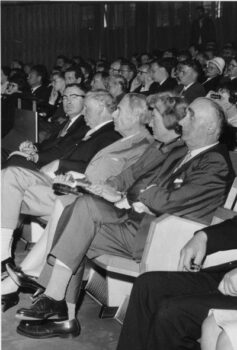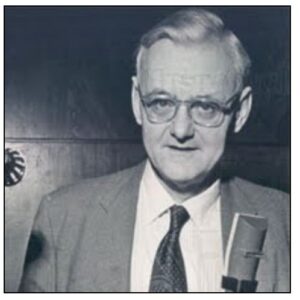“the world which subtends and interpenetrates”

ALDOUS HUXLEY LETTER TO DR HUMPHRY OSMOND

ALDOUS HUXLEY LETTER TO DR HUMPHRY OSMOND

740 N. Kings Rd.. Los Angeles 46, Cal.
10 April, 1953
Dear Dr Osmond,
Thank you for your very interesting letter and accompanying article, and for the very kind and understanding things you say of my Devils. It looks as though the most satisfactory working hypothesis about the human mind must follow, to some extent, the Bergsonian model, in which the brain with its associated normal self, acts as a utilitarian device for limiting, and making selections from, the enormous possible world of consciousness, and for canalizing experience into biologically profitable channels. Disease, mescaline, emotional shock, aesthetic experience and mystical enlightenment have the power, each in its different way and in varying degrees, to inhibit the functions of the normal self and its ordinary brain activity, thus permitting the ‘other world’ to rise into consciousness.
The basic problem of education is, How to make the best of both worlds—the world of biological utility and common sense, and the world of unlimited experience underlying it. I suspect that the complete solution of the problem can come only to those who have learned to establish themselves in the third and ultimate world of ‘the spirit’, the world which subtends and interpenetrates both of the other worlds. But short of this ultimate solution, there may be partial solutions, by means of which the growing child may be taught to preserve his ‘intimations of immortality’ into adult life. Under the current dispensation the vast majority of individuals lose, in the course of education, all the openness to inspiration, all the capacity to be aware of other things than those enumerated in the Sears-Roebuck catalogue which constitutes the conventionally ‘real’ world. That this is not the necessary and inevitable price extorted for biological survival and civilized efficiency is demonstrated by the existence of the few men and women who retain their contact with the other world, even while going about their business in this. Is it too much to hope that a system of education may some day be devised, which shall give results, in terms of human development, commensurate with the time, money, energy and devotion expended? In such a system of education it may be that mescaline or some other chemical substance may play a part by making it possible for young people to ‘taste and see’ what they have learned about at second hand, or directly but at a lower level of intensity, in the writings of the religious, or the works of poets, painters and musicians.
I hope very much that there may be a chance of seeing you in these parts during the Psychiatric Congress in May. One of the oddest fish you will meet at the congress will be a friend of ours, Dr [—–], who is perhaps the greatest living virtuoso in hypnosis. (Incidentally, for some people at least, deep hypnotic trance is a way that leads into the other world—a less dramatic way than that of mescaline inasmuch as the experiences are entirely inward and do not associate themselves with sensory perceptions and the character of things and people ‘out there’, but still very definitely a way.) If you are coming alone to the meeting, we can provide a bed and bath—but unfortunately the accommodation is too small for more than one. You will be free to come and go as it suits you, and there will always be something to eat—-though it may be a bit sketchy on the days when we don’t have a cook. In any case I look forward to seeing you and to the opportunity of discussing at greater length some of the problems raised in your letter and the articles by Dr Smythies and yourself.
Yours sincerely, Aldous Huxley
——————-
Dr Smythies: John Smythies, then associated with Osmond and with Dr Abram Hoffer in schizophrenia research at the Saskatchewan Hospital, in Weyburn. Osmond accepted Huxley’s invitation, with the results described in The Doors of Perception.
